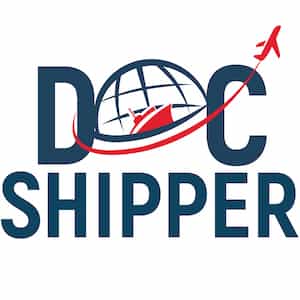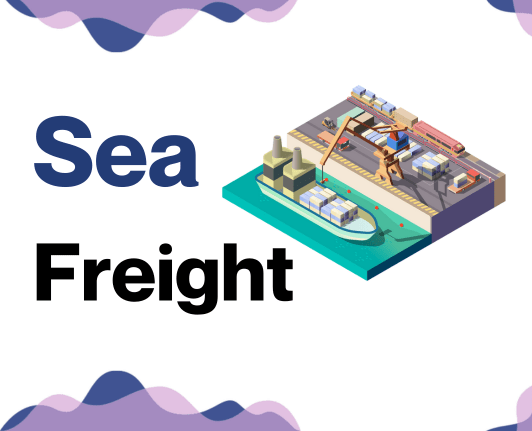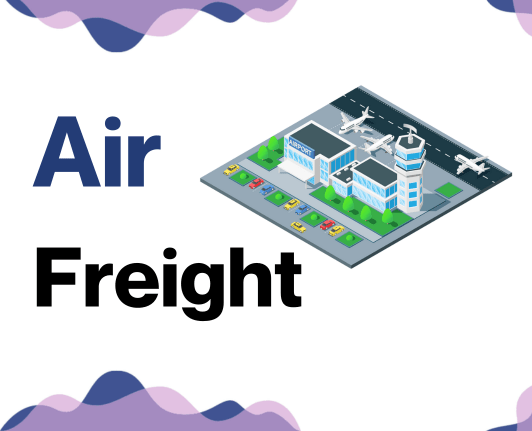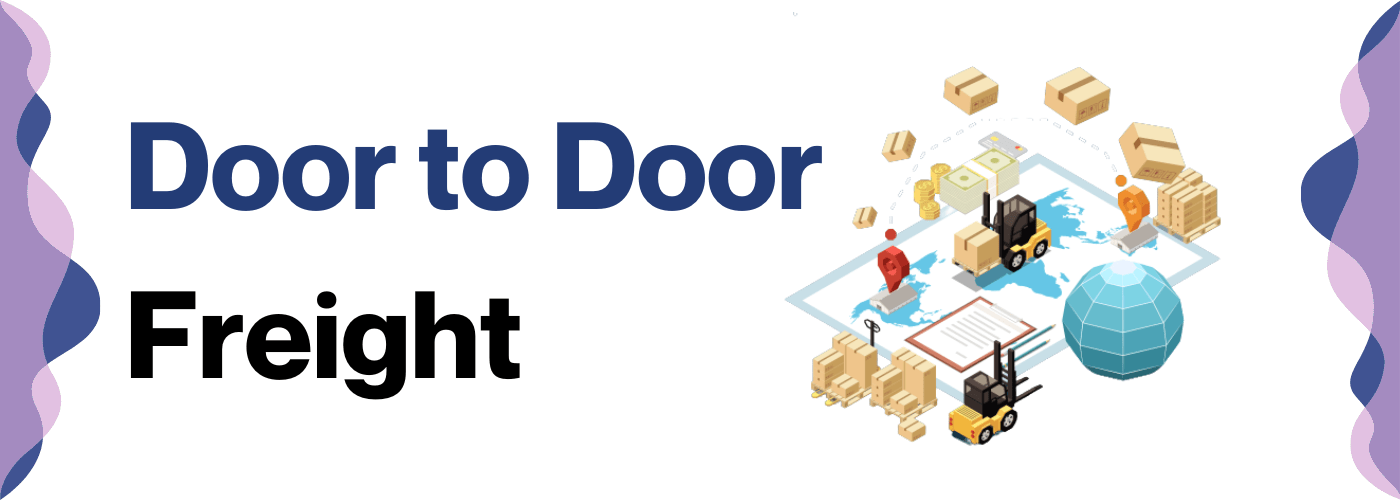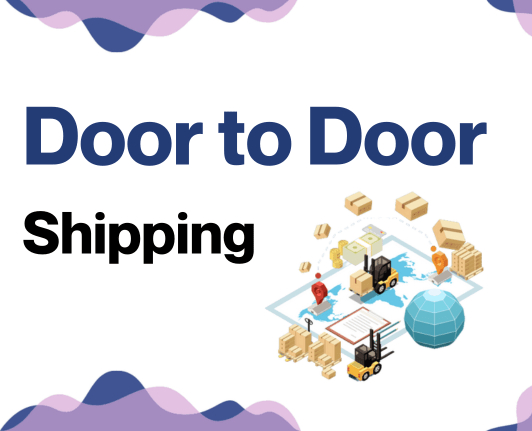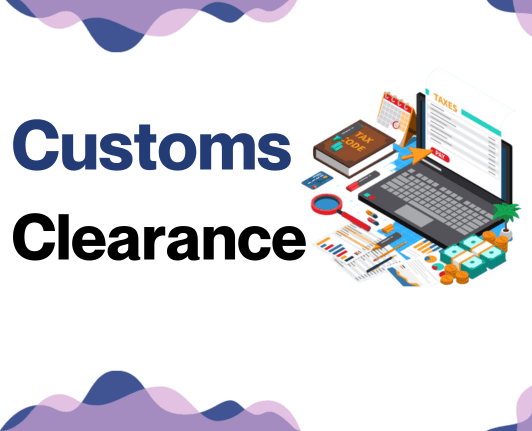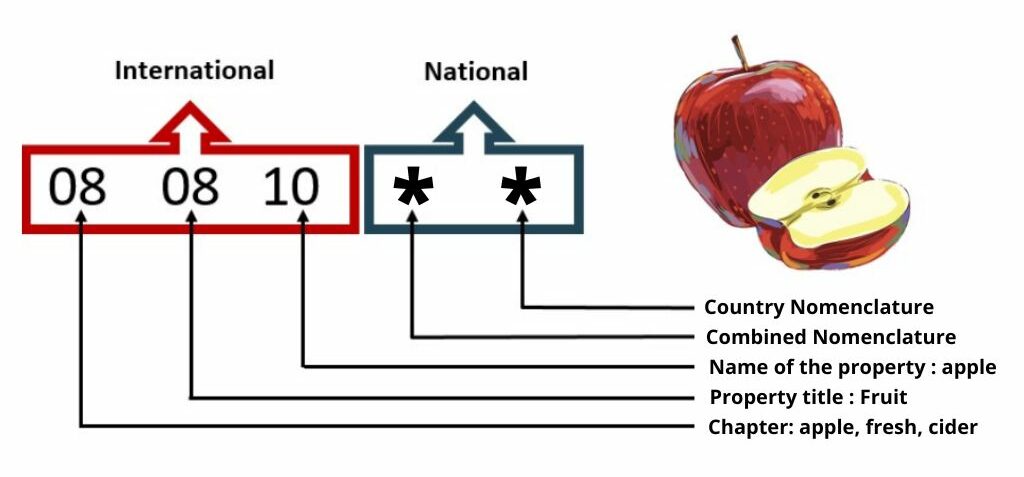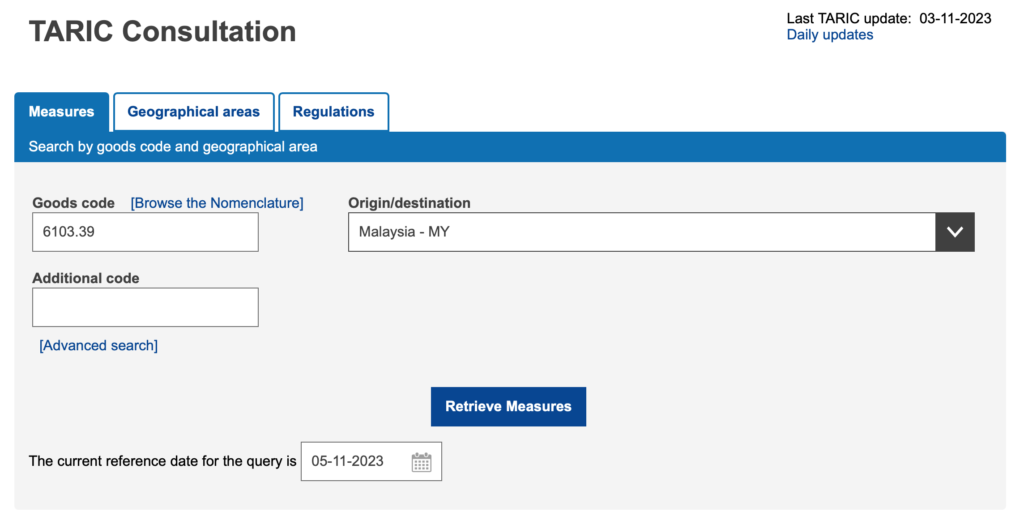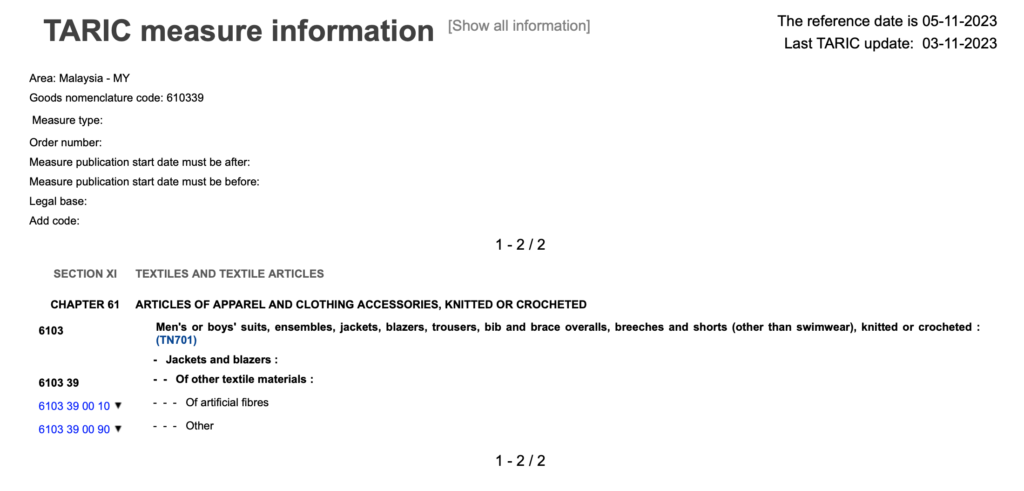Why did the package go on a vacation? Because it wanted to see the world! Jokes aside, shipping goods between Malaysia and Poland isn't just a holiday trip. Understanding the intricate details of freight rates, transit times, and navigating through labyrinthine customs regulations can feel like deciphering a foreign language. This comprehensive guide aims to ease your journey, diving deep into various freight options - be it air, sea, road, or rail. We will demystify the process of customs clearance, unmask the mystery of duties, unveil hidden taxes, and present sage advice tailored specifically for your business needs. If the process still feels overwhelming, let DocShipper handle it for you! As an accomplished international freight forwarder, we've turned shipping challenges into triumphs for countless businesses worldwide – and yours could be next!
Table of Contents
Which are the different modes of transportation between Malaysia and Poland?
Choosing the right transport method between Malaysia and Poland is like picking an adventurer for a grand voyage; it depends on the journey. Land-lock challenges and 9,000 km of distance make sea and air the heroes of our story. Your shipping needs dictate the lead role - bulky, less-urgent cargo might sail away on a container ship while time-sensitive, lighter packages could take flight. Because when it's about cross-continent shipping, sometimes slow and steady wins the race, or speed is the real ace.
How can DocShipper help?
Struggling with the complexities of shipping goods between Malaysia and Poland? DocShipper is your perfect logistics partner! From arranging transit to managing customs procedures, we’ve got it covered. Don't have all your shipping needs figured out yet? No worries! Our expert consultants are just a call away. Take the first step towards a hassle-free shipping experience - contact us now and get a free estimate within 24 hours!
DocShipper Tip: Sea freight might be the best solution for you if:
- You're dealing with hefty quantities or oversized goods. Sea transport is your go-to for maximizing space without stretching your budget.
- Time sensitivity isn't a concern for your shipment. Ocean freight is known for its leisurely pace, especially when compared to the speed of air or rail.
- Your supply chain connects key international harbors. This positions you to take full advantage of a wide-reaching network of ocean trade routes.
Sea freight between Malaysia and Poland
With thousands of miles separating Malaysia and Poland, sea freight becomes a lifeline that hooks into the beating heart of these economies. Like invisible threads, these trade routes swirl through the South China Sea, around the coast of India, and up through the Suez Canal to connect the bustling docks of Port Klang and Gdansk. Although this voyage holds the record for being the slowest method of shipping, for businesses seeking cost-effectiveness when moving high-volume goods, it's often the champion.
Yet, decoding the labyrinth of international shipping between Malaysia and Poland can seem like trying to decipher an ancient cryptogram. Numerous businesses often find themselves lost at sea, swallowed by the waves of customs regulations, documentation errors, and convoluted logistical planning. But fear not! Just as ancient sailors used constellations to navigate vast oceans, our guide is your North Star to shipping success. In it you’ll discover best practices and precise specifications that can anchor you in the tumultuous seas of international trade. From Port Klang to Gdansk, we're sailing together on this voyage, every nautical mile along the way.
Main shipping ports in Malaysia
Port Klang
Location and Volume: Located on the southwestern part of Peninsular Malaysia, Port Klang is the country's busiest port, with a shipping volume of over 12.3 million TEUs in 2019.
Key Trading Partners and Strategic Importance: Key trading partners include China, Europe, and Southeast Asian countries. Port Klang holds the strategic importance of being the main gateway to the global maritime trade route for Malaysia.
Context for Businesses: If you're aiming to expand into Asian and European markets, Port Klang, known for its excellent connectivity, might serve as a pivotal point in your logistics strategy.
Penang Port
Location and Volume: Nestled near the Malaysia-Thailand border, Penang Port handled a shipping volume of 1.43 million TEUs in 2019.
Key Trading Partners and Strategic Importance: It's deeply connected with neighboring countries such as Thailand and Indonesia. Its importance lies in its comprehensive facility lineup including container and conventional cargo handling.
Context for Businesses: Consider Penang Port in your strategy if you're targeting Indonesian and Thai markets. Its diverse cargo handling capabilities provide versatile shipping options.
Johor Port
Location and Volume: Situated in the southernmost part of Peninsular Malaysia, Johor Port saw a shipping volume of around 1 million TEUs in 2019.
Key Trading Partners and Strategic Importance: Primarily involved in trade with Indonesia, India, and other ASEAN countries, Johor Port holds a strategic location between China and Australia's sea routes.
Context for Businesses: If your target market is in the ASEAN region or Australia, the utilization of Johor Port could streamline your logistics due to its strategically advantageous position.
Tanjung Pelepas Port
Location and Volume: Tanjung Pelepas Port, situated in Johor, had a shipping volume of 9.1 million TEUs in 2019.
Key Trading Partners and Strategic Importance: Significant partners include China, Hong Kong, and the USA. The port is globally significant as one of the fastest-growing container ports.
Context for Businesses: If quick turnaround times are critical for your product, consider using Tanjung Pelepas Port in your logistics strategy. Its impressive growth underscores its increasing efficiency and reliability.
Bintulu Port
Location and Volume: Bintulu Port, in eastern Malaysia, is the main export gateway for Malaysia's LNG industry.
Key Trading Partners and Strategic Importance: Australia, Japan, and Thailand are significant partners, with the port serving as an integral hub for energy-related commodities.
Context for Businesses: If your business is energy-focused, specifically in the oil and gas sector, Bintulu Port offers an existing infrastructure with a strong track record in handling energy commodities.
Kuantan Port
Location and Volume: Kuantan Port, on the eastern coast of Peninsular Malaysia, focuses on handling bulk and liquid cargo.
Key Trading Partners and Strategic Importance: Key trading partners include China, with the port supporting the Malaysia-China Kuantan Industrial Park.
Context for Businesses: For businesses involved in the export of bulk commodities or entry into the Chinese market, Kuantan Port presents a unique opportunity, given its targeted facilities and proximity to the Chinese-backed industrial park.
Main shipping ports in Poland
Gdańsk
Location: Located in the southern edge of Gdańsk Bay, the Port of Gdańsk is integral to the Baltic Sea trade routes with a shipping volume of over 5 million TEU in 2020.
Key Trading Partners and Strategic Importance: Major trading partners include countries from the Far East, Western Europe, and the Baltic Sea region. It is strategically important for Poland, Europe, and global supply chains due to its ability to accommodate the world's largest container ships.
Context for Businesses: If you're planning to tap into the markets of Europe, especially Northern and Eastern Europe, this port's extensive network and robust infrastructure could be instrumental in your logistics strategy.
Gdynia
Location: Located in the Pomeranian Voivodeship, the Port of Gdynia is a major player in the Baltic region, boasting a shipping volume of approximately 2 million TEU per annum.
Key Trading Partners and Strategic Importance: Its main partners are in the Far East, Western Europe, and the Baltic region. The port is recognized for the reliable and efficient handling of goods, contributing to Poland's competitiveness in international trade.
Context for Businesses: If your logistics strategy involves the Northern European and Scandinavian markets, the port's strong position in the Baltic region and its comprehensive services might be highly advantageous for your operations.
Szczecin
Location: Strategically located on the Oder River, the Port of Szczecin handles a significant volume of cargo relative to other Polish ports.
Key Trading Partners and Strategic Importance: The Port of Szczecin primarily engages in trade with Western and Northern Europe. Its strategic location boosts trade activities in the region, with direct access to Berlin and economic centers of Western Poland.
Context for Businesses: If your shipping endeavours involve expanding into the Central European market, utilizing the Port of Szczecin, with its well-connected transshipment links and extensive range of cargo-handling options, could be key to your shipping strategy.
Swinoujscie
Location: Located where the Oder river meets the Baltic Sea, the Port of Swinoujscie plays a vital role in the Polish shipping industry.
Key Trading Partners and Strategic Importance: Its significant partners include the SECA countries Baltic and North Seas. The port's strategic importance lies in its access to the sea, making it a unique point of call in the region.
Context for Businesses: If your business is exploring the Scandinavian markets, the port's SECA connections and its status as a significant ferry terminal may be a critical part of your supply chain plans.
Gliwice
Location: Situated within the inland waterways connecting the Baltic and the Adriatic Seas, the port of Gliwice marks a significant position in intermodal transportation.
Key Trading Partners and Strategic Importance: It plays an integral role in trade with Southern and Central Europe. Comprising part of the trans-European transport corridor, it has gained strategic significance.
Context for Businesses: If your expansion plans involve harnessing the inland markets of Southern and Central Europe, consider the integration of Port Gliwice into your logistics due to its extensive connectivity.
Police
Location: Positioned by the Szczecin Lagoon, the port of Police is mainly recognized for bulk cargo and handling operations.
Key Trading Partners and Strategic Importance: Participation in trade with Western and Northern Europe marks its impactful role—functioning as a crucial port for bulk cargo handling enhances its strategic worth.
Context for Businesses: If your trade operations focus on bulk goods movements within Northern and Western Europe, incorporating the Port of Police's bulk handling efficiency into your strategy may prove invaluable.
Should I choose FCL or LCL when shipping between Malaysia and Poland?
Making the right choice between Full Container Load (FCL) and Consolidation (LCL), is key to the success of your cargo shipment from Malaysia to Poland. This strategic decision could significantly affect your costs, delivery time, and even your peace of mind. In this section, we'll dive into the nuances of these two sea freight options, arming you with the knowledge to select what fits best for your specific shipping needs. Prepare to explore and decide which option is the best for your business.
LCL: Less than Container Load
Definition: Less than Container Load (LCL) shipment involves consolidating several consignments from multiple shippers into one container. By choosing LCL freight, you only pay for space your goods occupy – a cost-effective option for small freight.
When to Use: LCL is an optimal choice when you're shipping cargo less than 13/14/15 Cubic Meter (CBM). It's exceptionally versatile, catering to smaller shipping loads and offering flexibility with shipment frequency.
Example: Suppose you're an electronics retailer looking to ship 10 CBM of headphones from Malaysia to Poland. With an LCL shipment, you can share container space and costs with other shippers, thereby availing timely delivery without the need to fulfill an entire container's capacity.
Cost Implications: The pricing strategy of LCL is based on the volume your cargo occupies. This results in lower overall shipment costs, especially for low-volume freight. However, LCL comes with additional charges like deconsolidation fees at the destination. Additionally, it may have higher risk exposure due to handling at multiple stages, potentially leading to increased insurance costs.
FCL: Full Container Load
Definition: FCL, or Full Container Load, refers to an exclusive use of a standardized shipping container, typically either a 20'ft or 40'ft. This means that a single consignee fills an entire container with their goods.
When to Use: FCL shipping is the preferred option when your cargo volume exceeds about 13/14/15 CBM. The cargo container is sealed from origin to destination, ensuring safety and security.
Example: Let's say your business exports automotive parts from Malaysia to garages across Poland, and volume ranges around 20 CBM monthly. For such instances, an FCL shipping service ensures your large consignment travels together, decreasing the risk of losing any part en route.
Cost Implications: While an upfront FCL shipping quote might be more than LCL, it could turn out cheaper in the long run for high-volume shipments. This is because you pay a flat rate for the container, regardless of whether it's fully laden. So, the more items you ship, the lower the cost-per-unit becomes. It's also worth noting that FCL shipping reduces the chances of potential costly damages or losses, due to less handling of the goods compared to LCL.
Unlock hassle-free shipping
Make ocean shipping between Malaysia and Poland an absolute breeze with DocShipper. Our freight experts will guide you in selecting between consolidation or a full container, considering factors such as your budget, cargo volume, and urgency. Breathe easy knowing that we simplify the complex world of global transport. Ready to move forward? Request a free estimate today for a hassle-free cargo shipping experience.
How long does sea freight take between Malaysia and Poland?
On average, sea freight shipping between Malaysia and Poland takes around 40 days. Though this is a good ballpark figure, it's worth noting that actual transit times will depend on various factors, including the specific ports involved, the weight and nature of the goods being shipped. For an exact quote, businesses are encouraged to approach a freight forwarding service such as DocShipper, who can provide a precise and customized quote to meet their specific needs.
As for the main ports, below is the transit time between the primary sea freight ports in both countries:
| Malaysia Ports | Poland Ports | Average Transit Time (in days) |
| Port Klang | Port of Gdansk | 45 |
| Port of Tanjung Pelepas | Port of Gdynia | 35 |
| Port of Penang | Port of Szczecin | 40 |
| Port of Johor | Port of Świnoujście | 45 |
*These times are average estimates and can vary depending on the specifics of the shipment. To get a more accurate timeline, contact a professional freight forwarder.
How much does it cost to ship a container between Malaysia and Poland?
Understanding the shipping cost from Malaysia to Poland can be quite complex, due to varying factors such as Point of Loading, Destination, chosen carrier, nature of goods, and market fluctuations. Ocean freight rates per CBM can greatly vary, making it tough to share an exact figure. However, don't let this uncertainty deter you. Our shipping specialists are adept at finding the best rates tailored to your unique requirements. Remember, we quote on a case-by-case basis as we strive for the most cost-effective solutions for your shipping needs. Let's work together towards uncomplicated, efficient, and budget-friendly international logistics!
Special transportation services
Out of Gauge (OOG) Container
Definition: An OOG container specifically refers to cargo that exceeds the standard container's dimensions, allowing for the transportation of large machinery, equipments, or other oversized items.
Suitable for: If your business deals with large, bulky cargo that doesn't fit into a standard container, like heavy machinery or equipment.
Examples: You might use this to ship large industrial machinery, heavy construction equipment, or oversized automotive parts from Malaysia to Poland.
Why it might be the best choice for you: The specialized design of an Out of gauge cargo container can accommodate your large cargo sizes, preventing you from needing to disassemble large goods, saving both time and potentially expensive reassembly costs.
Break Bulk
Definition: This method involves loading individual items separately onto a ship, rather than in containers. A break bulk system involves bags, boxes, crates, drums, barrels- anything that can be secured individually.
Suitable for: Businesses shipping loose cargo load, goods that are not containerized and need to be loaded piece by piece.
Examples: For instance, you may need Break Bulk for shipping drums of liquid ingredients for food products, barrels of raw materials, or even large construction equipment.
Why it might be the best choice for you: The break bulk method gives you flexibility in accommodating different types and sizes of goods, making it a fit for companies with diverse product types and for those who don't need a full container's cargo space.
Dry Bulk
Definition: Dry Bulk shipping refers to the transportation of homogenous, loose goods such as coal, grain, or metal ores in large quantities directly loaded into the vessel's hold.
Suitable for: This method is apt for industries dealing with loose goods like grains, minerals, or coal in large quantities.
Examples: A coal mining company, for example, might require Dry Bulk shipping to export large amounts of coal from Malaysia to power plants in Poland.
Why it might be the best choice for you: If you're dealing in large quantities of a single, loose cargo type, Dry Bulk offers an efficient and cost-effective transportation solution, bypassing the need for containers completely.
Roll-on/Roll-off (Ro-Ro)
Definition: With Roll-on/Roll-off, vehicles or machinery that are on wheels can be driven onto a ship and secured inside, ready to be driven off at the destination. The ro-ro vessel is equipped with ramps and specialized holds for vehicle storage.
Suitable for: Businesses involved in the vehicle industry, from cars, trucks, construction machinery, to trailers.
Examples: You might use Ro-Ro if you're an automotive dealer exporting cars from Malaysia to Poland or a construction company moving heavy machinery overseas.
Why it might be the best choice for you: Ro-Ro offers an efficient and secure way of moving wheeled cargo, reducing the need for disassembly and expensive packing into containers.
Reefer Containers
Definition: These are temperature-controlled shipping containers designed to maintain a constant interior temperature, ideal for transporting perishable goods.
Suitable for: Businesses dealing with goods that require a controlled climate like fruits, vegetables, dairy products, or pharmaceuticals.
Examples: For instance, if you're a Polish supermarket chain importing tropical fruits like durians from Malaysia, reefer containers would be critical to maintaining the fruit's freshness.
Why it might be the best choice for you: If your goods are temperature-sensitive, choosing refrigerated containers can ensure the freshness and quality of your perishables from pickup to delivery.
Exploring your shipping options is critical for business success in international markets. Our team at DocShipper is here to navigate you through these decisions based on your specific needs. Get in touch for a free shipping quote within 24 hours!
DocShipper Tip: Air freight might be the best solution for you if:
- You're pressed for time or facing a non-negotiable deadline. Air freight delivers unparalleled speed when it comes to transit times.
- Your shipment is modest in size, falling under 2 CBM. Air freight is particularly well-suited for these smaller consignments.
- Your supply chain includes destinations that are off the beaten maritime or rail paths. Air freight gives you access to a comprehensive global airport network.
Air freight between Malaysia and Poland
So, you're looking to ship goods from Malaysia to Poland, right? Turns out, air freight may be your knight in shining aircraft wings, especially for small but valuable cargo like sophisticated electronics or medical instruments. Speedy and reliable, it's the Usain Bolt of international shipping. But, here's the deal: it’s akin to solving a Rubik’s cube for shippers, particularly when it comes to cost estimation.
You see, cargo isn't just priced on weight; it's dimensional weight or 'volumetric weight'. This is where many stumble, ending up with nasty financial surprises. Furthermore, not knowing industry know-hows can cost an arm and a leg. Stick around and you'll find tips to sidestep these pitfalls, ensuring your shipment not only lands on time but also within budget. With the right knowledge, your air shipping experience can be as smooth as a cloudless flight.
Air Cargo vs Express Air Freight: How should I ship?
Choosing between Air Cargo and Express Air Freight for your Malaysia-Poland shipment can be like selecting from a buffet—you need to pick what suits your business appetite best! Put simply, Air Cargo seats your goods on a commercial flight, while Express Air Freight books them a private plane. Let's deep dive into these options, making your decision easier and ensuring your freight arrives in the most efficient, cost-effective manner.
Should I choose Air Cargo between Malaysia and Poland?
Air cargo is a reliable and cost-effective method to transport goods between Malaysia and Poland. Particularly from 100/150 kg of cargo (220/330 lbs), works well with your budget needs. Airlines such as MAScargo and LOT Polish Airlines handle significant air freight. Be aware, longer transit times are to be expected due to fixed schedules. This method maintains consistency, ensuring your goods arrive in a timely, secure manner.
Should I choose Express Air Freight between Malaysia and Poland?
For businesses dealing with cargo under 1 CBM or below 100/150 kg (220/330 lbs), Express Air Freight - a service offered by renowned international couriers like FedEx, UPS, and DHL- can be a fitting choice. As a highly specialised service, it employs dedicated cargo planes devoid of passengers, ensuring your shipments from Malaysia to Poland are speedily expedited. This is particularly advantageous when your cargo's timeliness triumphs over cost considerations. So, if you're after a service that assures rapid transit times without compromising on reliability, look no further than Express Air Freight.
Main international airports in Malaysia
Kuala Lumpur International Airport (KLIA)
Cargo Volume: KLIA handled approximately 726,230 metric tons of cargo in 2019, making it Malaysia's busiest cargo airport.
Key Trading Partners: Key trading partners are primarily located in Asia and include China, Japan, the Philippines, and Thailand. Other significant trading partners include Australia, Germany, and the United States.
Strategic Importance: KLIA's location in Peninsular Malaysia makes it a vital hub for the country's cargo operations, boasting excellent connectivity to Asia, Europe, and other international destinations.
Notable Features: KLIA has a dedicated cargo area named KLIA Cargo Village, which provides comprehensive services including cargo handling, logistics, and freight forwarding.
For Your Business: KLIA's impressive range of services and strategic location can facilitate your goods' entry into the Asian market. With the provided facilities, your business will have the potential to streamline logistics operations and ensure your cargo reaches its destination promptly.
Penang International Airport
Cargo Volume: In 2019, Penang International Airport managed over 172,774 metric tons of cargo, highlighting its significant role in the country's cargo industry.
Key Trading Partners: Main trading partners include China, Hong Kong, Singapore, Thailand, Japan, and Taiwan, along with Germany and the United States.
Strategic Importance: Located in the northern part of Peninsular Malaysia, this airport is an essential cargo link to both Asia and beyond due to its economic zone status.
Notable Features: The airport is near the Free Trade Zone, which houses numerous global manufacturing companies, enhancing its cargo handling facilities.
For Your Business: Close proximity to the Free Trade Zone could mean faster and more efficient routing for your shipments, particularly if your business deals with manufacturers based in the region.
Senai International Airport
Cargo Volume: In 2019, Senai International Airport facilitated the transport of approximately 12,320 metric tons of cargo.
Key Trading Partners: Main trading partners include nations within the Asia-Pacific region, particularly China, Japan, Singapore, and Thailand.
Strategic Importance: Being in the southernmost part of Peninsular Malaysia, it strategically serves the thriving industrial area of Johor and acts as a gateway to neighbouring countries.
Notable Features: Senai International Airport is known for its cargo complex, offering freight services with a focus on handling industrial cargo for the Southern Industrial and Logistics Clusters (SiLC).
For Your Business: The airport's industrial-centric approach can benefit businesses in relevant sectors, with tailored services aimed at optimising your cargo transport process.
Kuching International Airport
Cargo Volume: The airport handled approximately 22,223 metric tons of cargo in 2019.
Key Trading Partners: Kuching International Airport's major trading partners include Singapore, Indonesia, China, and Brunei.
Strategic Importance: This airport is a crucial access point to East Malaysia and Borneo, serving as a cargo hub for the region.
Notable Features: The airport is equipped with facilities that handle both domestic and international cargo, making it adaptable for a range of business needs.
For Your Business: If your business trades extensively with East Malaysia or Borneo, utilizing Kuching International Airport's facilities could result in efficient routing and expedited deliveries.
Kota Kinabalu International Airport
Cargo Volume: In 2019, the airport processed approximately 23,481 metric tons of cargo.
Key Trading Partners: Key trading partners include China, Korea, Singapore, and Indonesia.
Strategic Importance: As the second-busiest airport in Malaysia, it serves as an important gateway to East Malaysia and plays a pivotal role in the Borneo region's cargo operations.
Notable Features: The airport operates around the clock, enabling continuous cargo handling and transport operations.
For Your Business: The flexibility offered by the airport's 24-hours operation can ensure your cargo is transported in a timely manner, crucial for shipments sensitive to time delays.
Main international airports in Poland
John Paul II Kraków-Balice International Airport
Cargo Volume: Annually, it handles approximately 22,000 tons of cargo.
Key Trading Partners: It has strong connections with Germany, France, and the UK, supporting regular cargo deliveries to these countries.
Strategic Importance: Located in Southern Poland, it serves as a significant transportation hub connecting Central and Eastern Europe.
Notable Features: The airport dispenses regular cargo charters and is equipped with storage warehouses and customs facilities for smooth cargo handling.
For Your Business: If your business frequently sends or receives goods from the key markets of Germany, France, or the UK, taking advantage of Kraków's connectivity might streamline your logistics.
Warsaw Chopin International Airport
Cargo Volume: It handles over 100,000 tons of cargo annually, making it Poland's largest cargo airport.
Key Trading Partners: Key markets include Germany, the UK, and the United States.
Strategic Importance: Located in the capital city, it plays a crucial role in Poland's trade with key international markets.
Notable Features: The airport offers five cargo terminals, including state-of-the-art facilities for temperature-sensitive goods.
For Your Business: If your cargo includes temperature-sensitive goods, Warsaw's specialized facilities can ensure safe and efficient handling, providing your business with a crucial advantage.
Gdańsk Lech Wałęsa Airport
Cargo Volume: It processes about 30,000 tons of cargo yearly.
Key Trading Partners: Germany, France, and the Nordic countries are primary trade networks.
Strategic Importance: It's located near the sea port of Gdańsk, which is significant for combined sea-air freight.
Notable Features: It features a high-tech Cargo Terminal offering around-the-clock customs services.
For Your Business: If your business relies on a mixed model of sea-air freight, utilizing Gdańsk's location can enable better logistic efficiency.
Wrocław-Copernicus Airport
Cargo Volume: Handling capacity is around 10,000 tons per annum.
Key Trading Partners: Primarily trades with countries including Germany, France, and the UK.
Strategic Importance: Set in Western Poland, it provides a key logistics link to both Warsaw and Germany.
Notable Features: Offers a modern Cargo Terminal with customs on-site, allowing for swift processing.
For Your Business: With its strategic location, this airport could offer your business a cost-effective solution into the German market without utilizing Germany's crowded airports.
Katowice International Airport
Cargo Volume: Around 20,000 tons of cargo moves through annually.
Key Trading Partners: Has a strong trading relationship with Germany, the UK, and France.
Strategic Importance: As one of Poland's fastest-growing airports, its location in southern Poland gives a strong access point to key central European markets.
Notable Features: It is the only airport in Poland offering the Cargo 24 service, promising clearance within 24 hours.
For Your Business: If your business values speed and efficiency in customs clearance, Katowice's exclusive 'Cargo 24' service offers an attractive solution to expedite your cargoes.
How long does air freight take between Malaysia and Poland?
On average, air freight transit times between Malaysia and Poland typically range between 3 to 7 days. However, keep in mind these timelines may vary. Factors influencing transit times include specific airports involved, the weight of consignment, and the nature of the goods being transported. For accurate and tailored shipping times, it's advised to consult with a freight forwarding expert like DocShipper to ensure a seamless shipping experience.
How much does it cost to ship a parcel between Malaysia and Poland with air freight?
Air freight costs between Malaysia and Poland can broadly range from $3-$10 per kg. However, predicting an exact cost is complex due to factors like distance from the departure and arrival airports, parcel dimensions, weight, and type of goods. That's why our team provides bespoke rates, ensuring you receive optimal pricing tailored to your specific needs. Remember, each shipment is unique and deserves custom consideration. Contact us today, and receive a free quote tailored to your specific needs in less than 24 hours.
What is the difference between volumetric and gross weight?
Gross weight refers to the actual weight of a shipment, while volumetric weight, often called dimensional weight, considers the space a package occupies in an aircraft relative to its actual weight.
To calculate the gross weight in air freight, simply weigh your shipment. For example, if your package weighs 35 kg, this translates to approximately 77.16 lbs.
For volumetric weight, the formula differs between Air cargo and Express Air Freight services. In Air cargo, you multiply the length x width x height (in cm) of your package and then divide by 6000. Let's say your shipment is 50 cm x 40 cm x 30 cm. Therefore, (50 x 40 x 30) / 6000 = 10 kg (approximately 22.04 lbs).
Express Air Freight services, on the other hand, use a divisor of 5000. Using the same dimensions, (50 x 40 x 30) / 5000 = 12 kg (approximately 26.45 lbs).
These calculations are pivotal because freight charges are generally based on the greater figure between volumetric and gross weight. It assures that lightweight, bulky packages don't occupy more than their fair share of aircraft space, relative to their transportation cost.
DocShipper tip: Door to Door might be the best solution for you if:
- You value convenience and want a seamless shipping process, as door-to-door takes care of every step from pickup to delivery.
- You prefer a single point of contact, as door-to-door services typically provide a dedicated agent to handle all aspects of the shipment.
- You want to minimize the handling of your goods, reducing the risk of damage or loss, as door-to-door minimizes transitions between different modes of transport.
Door to door between Malaysia and Poland
Venturing into international trade? Let's talk Door to Door shipping – where we pick up your goods from Malaysia and deliver right to your place in Poland. It eliminates multiple handling and slices through layers of bureaucracy. Greater efficiency, trackability, and cost-effectiveness – that's what Door to Door promises. Now, let's dive in!
Overview – Door to Door
Experience a hassle-free shipping journey between Malaysia and Poland with our popular Door to Door service. As your shipping navigator, we'll handle complex processes - from transport organization to customs clearance. This end-to-end solution minimizes potential difficulties, saving you invaluable time and energy. While this comprehensive service may initially seem costly, its benefits outweigh the costs. Besides, doesn't trading shipping stress for peace of mind sound appealing? See why many of DocShipper's clients elect this service for their global shipping needs!
Why should I use a Door to Door service between Malaysia and Poland?
Ever tried to choreograph a ballet routine while also playing chess on a rollercoaster? That's the chaos you'd feel trying to handle international shipping logistics by yourself. No worries, Door to Door service between Malaysia and Poland is here to pirouette all that chaos into rhythm.
1. Kiss Goodbye to Stress: Do you like paperwork, customs clearance, or dealing with transport regulations? We thought so! With Door to Door, you needn't fuss over these. Just sit back, we've got this!
2. Timely Delivery: Urgent shipment? Tick-tocking deadlines? No problem! We specialize in fast, reliable deliveries, racing against time so you don't have to.
3. Special Cargo Care: Whether it's a delicate Ming vase or a roaring motorbike, complex cargo doesn't phase us. We revere the art of getting precious goods from A to B in one pristine piece.
4. Athletic Agility: Just like a star player, Door to Door service could bob and weave through the confusing labyrinth of international freight, scoring you that winning goal in perfect time.
5. All the Way Home: Hassling with trucking? Drop it! From Kuala Lumpur to Krakow, we go the whole mile (or thousand) to deposit your cargo right at the doorstep.
Choosing Door to Door service is like getting a VIP pass to avoiding shipping chaos - eliminating stress, ensuring timeliness, providing gentle care for your treasures, nimbly navigating the logistics maze, and finally, delivering convenience right to your door. And the best part? You get to enjoy the performance, without breaking a sweat.
DocShipper – Door to Door specialist between Malaysia and Poland
Seamlessly navigate your cargo from Malaysia to Poland with DocShipper's comprehensive door-to-door shipping solutions. We've got you covered, managing all steps from packing and transport to customs procedures, regardless of your preferred shipping method. Rest easy knowing a dedicated Account Executive is handling your freight needs. Reach out for a quick, complimentary estimate within 24 hours or consult with our experts at no cost. Enjoy a stress-free shipping experience start to finish with DocShipper.
Customs clearance in Poland for goods imported from Malaysia
Customs clearance - the all-important step in your shipping journey from Malaysia to Poland. It's a labyrinth of regulations, filled with potential pitfalls like surprise fees and charges. Your goods' fate hangs in the balance, possibly trapped in customs due to lack of understanding customs duties, taxes, quotas, and licenses. Because of this complexity, it's vital to grasp every detail. Breathe easy, as the coming sections will deeply explore these areas. Plus, team DocShipper is on standby, ready to navigate this maze with you - no matter your goods or their origin. Need an estimate to set your budget? Just send us the origin, value, and HS Code of your goods. Your shipping success is just around the corner.
How to calculate duties & taxes when importing from Malaysia to Poland?
Estimating duties and taxes for goods imported from Malaysia to Poland involves decoding several key elements. To begin, you need to be well versed with the country of origin - which is where your goods were actually manufactured or produced. Next, you have to acquaint yourself with the Harmonized System Code (HS Code) that classifies your products. In addition to this, you need to ascertain the customs value of your goods. This typically relates to the purchase price, but it also comprises any shipping fees, insurance costs or any other related charges. Then comes the Applicable Tariff rate which encapsulates the fees your goods may be subjected to when they cross international borders. To add to this, there could be other taxes and additional fees that your products could incur based on specific conditions. To systematically start this process, your first step revolves around identifying the country where your goods have originally been manufactured or produced. Get this information spot-on and you're one step closer to successfully navigating the complex seas of international shipping duties and taxes.
Step 1 - Identify the Country of Origin
Surely, identifying the country of origin feels like a no-brainer, but don't dismiss it as just a checkbox. It's pivotal for five key reasons:
1. Brews the basis for correct tariff classification - your product's birthplace can change its Harmonized System (HS) code.
2. Fuels accurate duty and tax calculations - different countries, varied costs.
3. Flags beneficiary trade agreements - Poland and Malaysia, for instance, are part of several pacts slashing customs duties, like the EU-ASEAN trade agreement.
4. Highlights import restrictions – be aware of limit checks, for items like firearms or specialty foods. Fail to comply and you'll face headaches.
5. Harvests essential documents – your supply chain will need proof of origin for administrative procedures.
Apply this rule of thumb: Match your product with the correct trade agreement. For example, if your product qualifies under the EU-ASEAN agreement, you would profit from the import duty reductions.
Stay alert of import restrictions. Malaysia has its unique limitations, so double-checking the Polish customs website would save you time and hassle down the line.
Remember, you're taming the trade, not just surviving it. By taking the right steps from the start, you'll sail through not just between Poland and Malaysia, but anywhere in the world!
Step 2 - Find the HS Code of your product
The Harmonized System Code, commonly referred to as the HS Code, is an international classification system for goods. Introduced by the World Custom’s Organization, this system uses specific codes to classify traded goods. This simplifies customs processes and makes it easier to identify products.
In general, the simplest method of acquiring the HS Code for your goods is by asking your supplier. They have a deep understanding of their products and the associated regulations, including the HS Code. However, if your supplier cannot provide you with the HS Code or if you want to double-check, there’s an easy way to find it by yourself.
Start by visiting the Harmonized Tariff Schedule page on the U.S. International Trade Commission website. In the search bar, type the name of your product and hit 'Search'. Once the results appear, navigate to the 'Heading/Subheading' column, where you'll find your product's HS Code.
Please Note: Accuracy is paramount when it comes to HS Codes. A wrong code can lead to unnecessary complications, such as shipping delays and potential fines. For this reason, we encourage you to take extra time in searching for and verifying your product's HS Code.
Here's an infographic showing you how to read an HS code.
Step 3 - Calculate the Customs Value
You're faced with an array of values when dealing with international shipping - the price of your goods, the cost of shipping and insurance, and something called customs value. Unlike your goods' price, customs value dives into the total cost associated with bringing your goods into Poland from Malaysia. It's an essential factor in determining how much you'll pay in customs duties.
Customs value isn't just about your product's pricing. It's calculated using the CIF (Cost, Insurance, Freight) value, which mashes together your goods' total price (in USD), the international shipping cost, and the insurance expense. Say, for example, you've goods valued at $5000, with international shipping costing $1000, and insurance at $200. Your CIF or customs value would then be $5000 + $1000 + $200 = $6200. Remember this to avoid any unnecessary astonishment when handling your shipping-related costs.
Step 4 - Figure out the applicable Import Tariff
An import tariff is a tax imposed on goods that are bought in one country and brought (or “imported”) into another country. In the context of importing goods from Malaysia to Poland, which is a member of the European Union, these tariffs are subject to EU standards.
To determine the applicable import tariff, you'll be making use of the TARIC Consultation Tool on the TARIC System - European Customs webpage.
Let's make this concrete with an example: imagine you're importing a wooden dining table, categorized under HS Code 9403.60. To proceed, you'd:
1. Login to the TARIC System and enter 9403.60 into the search box, along with the country of origin, Malaysia.
2. The system will then disclose the applicable duties and taxes for your product.
Let's say it displays a tariff rate of 2.7%. If your table cost $100 and the Cost, Insurance, and Freight (CIF) is $20, you'd calculate the import duties as such:
($100 + $20) 2.7% = $3.24
So, your import duties would be $3.24. Armed with this knowledge, you're now able to import your goods from Malaysia in accordance with Polish and EU regulations.
Step 5 - Consider other Import Duties and Taxes
While completing customs clearance in Poland for goods imported from Malaysia, you'll need to consider several other import duties and taxes beyond the standard tariff rate. Depending on your product and its country of origin, you might face additional costs like excise duty or anti-dumping taxes.
Let's say, for instance, you're importing rubber gloves. They are highly regulated so there could be an anti-dumping tax to level the playing field for local producers. We don't have the current rate, but as an example, suppose it's 10%.
You should also be aware of Poland's Value Added Tax (VAT) system. The general VAT rate in Poland is 23%, applied to the customs value plus the tariff and any other duties. So, if your gloves cost $1000, and the standard tariff is $150, you'd calculate VAT as follows: 23% of ($1000 + $150) = $264.50.
These are theoretical figures but they exemplify how these duties and taxes quickly add up. Be sure to gather accurate information to avoid surprise costs and delays. In some cases, using freight forwarding services might help make this process smoother.
Step 6 - Calculate the Customs Duties
Navigating customs might seem daunting, but breaking down the process can make it a breeze. The amount you'll owe in customs fees can be calculated with the following formula:
Customs Duties = Customs Value x Duty Rate + VAT + Anti-Dumping Taxes + Excise Duty.
Let's apply this to comprehend better:
Example 1: A shipment with a customs value of $5000 and a duty rate of 10%, you'd owe $500 in duties, but with no VAT, the total remains $500.
Example 2: That same shipment with a 20% VAT rate, you'd owe $500 in duties plus $1000 in VAT, totalling $1500.
Example 3: If you were hit with a 5% anti-dumping tax and a 5% excise duty, you'd owe $500 in duties, $1000 in VAT, $250 in anti-dumping tax, and $250 in excise duty - bringing your total to $2000.
However, ensuring you've calculated rightly demands experience; significance of a detail, even a small one, can be a costly affair. With DocShipper's customs clearance services, you can feel at ease. Our expert teams around the globe can ensure that your goods clear customs smoothly, you pay the right amount, and nothing more. No need to stress - get a free quote in under 24 hours. Embrace diligently managed customs clearance, globally!
Does DocShipper charge customs fees?
DocShipper, as a custom broker operating in Malaysia and Poland, is responsible for charging customs clearance fees, not customs duties and taxes. These go directly to the government. Confusing the two could lead to unexpected costs for your business. For full transparency, DocShipper provides you with official documents from the customs office, ensuring you only pay the actual customs fee. Think of it like ordering a meal - the restaurant (us) bills service fees, while the government levies taxes. Both appear on your receipt, yet are for different parties.
Contact Details for Customs Authorities
Malaysia Customs
Official name: Royal Malaysian Customs Department
Official website: http://www.customs.gov.my/en/
Poland Customs
Official name: Customs Service of the Republic of Poland
Official website: https://www.mf.gov.pl/en/customs-service
Required documents for customs clearance
Master the hurdle of customs clearance smoothly! This section unravels the essentials of paperwork: your Bill of Lading, Packing List, Certificate of Origin, and Documents of Conformity (CE standard). Understand their purposes, dodge customs delays, and keep your goods moving!
Bill of Lading
Navigating between Malaysia and Poland? In this global dance of logistics, your Bill of Lading (BoL) serves as your golden ticket. Think of it as your item's passport – it's living proof of the transfer of ownership from your company to its new home. If you're sailing the digital waves, fret not - electronic (“telex”) releases of BoLs are accepted too, speeding up the process while ensuring security. For those of you soaring through the skies with air cargo, the Air Waybill (AWB) becomes your trusted companion. These documents keep your cargo legit and the custom officials content. The takeaway? Handle your BoL or AWB with the same care you'd show to your most valuable consignment - it smooths your international passage, bringing you one step closer to that satisfying final delivery.
Packing List
When you're shipping goods from Malaysia to Poland, the Packing List is your best friend. Think of it as a detailed roundup of everything contained in your shipment. Creating this document falls on you, the shipper. Attention to detail in this document is crucial as customs officers will confirm everything from the weight and quantity to the type of goods listed. Suppose you're sending a batch of electronics via sea freight, your Packing List should clearly detail the number of boxes, the kinds of electronics, their weight, and so on. The same goes for air freight. A mismatch could lead to shipment delays. Take time and ensure your Packing List is a mirror image of your shipment for smoother customs clearance.
Commercial Invoice
When shipping goods from Malaysia to Poland, your Commercial Invoice is a cargo clearance superpower. This document captures vital details such as the specifics of the goods, their value, and the parties involved. It's crucial to ensure your Commercial Invoice aligns perfectly with your other shipping documents like the Bill of Lading or Air Waybill. Fudging even minor details could trigger costly customs holds. For example, if your Invoice says 'Handcrafted Wooden Toys' but the Bill of Lading reads 'Wood Products', it might raise red flags at customs. So, keep it crystal clear, consistent, and accurate - a seamless correspondence between all your documents makes the customs clearance process smoother than a water slide. This becomes your secret weapon in fast-tracking the import process and reducing downtime due to customs delays.
Certificate of Origin
When shipping goods between Malaysia and Poland, your Certificate of Origin (CoO) is a passport for your cargo. This critical document attests to the goods' country of manufacture, which can sometimes dictate preferential customs duty rates. For instance, a furniture manufacturer in Kuala Lumpur shipping artisanal wooden chairs to Warsaw could potentially benefit from lowered duties, provided their CoO clearly states 'Made in Malaysia'. But beware! Dodge the potential hiccups by ensuring nothing slips through the cracks. Be meticulous when listing the country of manufacture, as inaccuracies can lead to hold-ups or even the imposition of higher duties. Wrapping up, remember, your CoO is not just a formality, but a practical tool to streamline customs and save you money!
Certificate of Conformity (CE standard)
When shipping goods from Malaysia to Poland, you'll need to have a Certificate of Conformity that meets CE standards. CE marking indicates that your product conforms with health, safety, and environmental protection standards for products sold within the European Economic Area (EEA), of which Poland is part. Despite any similarities, this is not a quality assurance certificate. It is more like a passport that allows your product entry into the EU market. Unlike the U.S. Market's various product standards, the CE marking is an all-encompassing regulatory system. Thus, your goods won't make it past customs without it. So, as you're planning your next shipment, make sure to have this vital document in order. Without it, your goods could be held at the border, resulting in unexpected costs and delays. Remaining informed and prepared will ensure a smooth shipment transition from Malaysia to Poland.
Your EORI number (Economic Operator Registration Identification)
Shipping goods from Malaysia to Poland demands a key piece of documentation called the EORI Number. This unique identifier is vital to iron-smooth trading within Europe. Without it, you could face a myriad of hold-ups in your supply chain. Think of it as your business's passport, tracking your import-export footprints across EU expanses, including Poland - an EU member. The registration process - it's crucial to navigate this early to avoid any hiccups. Each shipment, each transaction leaves a 'breadcrumb' trail via this number, providing transparency and efficiency in EU trade lanes. Decoding the process of sourcing an EORI Number can be a game-changer for your Malaysia-Poland trading journey.
Get Started with DocShipper
Navigating through the intricacies of customs clearance can be daunting. With DocShipper at your side, you need not bear the burden alone. From comprehensive document handling to real-time updates, we ensure seamless clearance at both Malaysian and Polish ports. No more paperwork mess and customs stress. Take action now! Request a free quote and receive it within 24 hours. Your hassle-free customs experience is just a click away.
Prohibited and Restricted items when importing into Poland
Tangled in the web of what's allowed into Poland and what's not? Don't fret - we're here to clear up that confusion. Below, we delve into Poland's prohibited and restricted items list, to help you avoid unexpected hiccups in your import journey.
Restricted Products
- Pharmaceuticals: You'll need to secure a permit from Poland's Office for Registration of Medicinal Products, Medical Devices and Biocidal Products.
- Tobacco Products: To ship tobacco products, make sure you've obtained the Tobacco Retail License from the State County Sanitary-Epidemiological Station in Poland.
- Alcohol: To ship alcohol, you're required to have the Alcohol Retail License from the County Administrative Office.
- Weapons and Ammunition: Shipping weapons and ammunition involves getting an authorization from the Provincial Police Headquarters.
- Plants and Plant Products: A Phytosanitary Certificate from The Polish Chief Inspectorate of Plant Health and Seed Inspection is needed for any plants or plant products.
- Live Animals and Animal Products: You're required to secure a Veterinary Health Certificate from The Veterinary Inspection Office for shipping live animals and animal products.
- Hazardous Chemicals: If you're shipping hazardous chemicals, you need to have the Chemicals Permit from The Bureau for Chemical Substances.
Remember, getting these permits and licenses should be one of the first steps in your shipping process to ensure a hassle-free transportation of goods to Poland.
Prohibited products
- Narcotics and Drugs (unless permitted by the Minister of Health)
- Explosive and radioactive materials
- Obscene or immoral materials
- Live animals from non-EU countries
- Products, devices or substances, the production, trading or possession of which is forbidden by law
- Goods bearing marks or descriptions falsely representing the place of origin
- Wireless transmitters and receivers without prior permission
- Certain endangered species of plants, animals and their derivatives, regulated under the Convention on International Trade in Endangered Species (CITES)
- Counterfeit and pirated goods, and goods violating other intellectual property rights under certain conditions
- Products forbidden due to reasons related to the protection of health, the environment, the national security, the preservation of artistic, historic or archaeological heritage.
Are there any trade agreements between Malaysia and Poland
Yes, Malaysia and Poland, being a part of the EU, fall under the Malaysia-European Union Free Trade Agreement (MEUFTA) negotiations. Although these talks have been temporarily paused, they promise to remove many barriers, offering shipments between the two countries improved trade conditions in the future. Also, various Polish and Malaysian trade associations are actively fostering business linkages, paving the way for opportune collaborations. Keep this in mind as a potential growth opportunity for your cross-border shipping operations.
Malaysia - Poland trade and economic relationship
Malaysia and Poland have a robust trade and economic relationship, spanning several decades. Ties were established post-World War II with a primary focus on trade and investment. High-tech manufacturing and agro-food products are key sectors, elevating bilateral trade. Malaysia's main exports, including electrical and electronic products, have found a lucrative market in Poland. Meanwhile, Poland's exports of machinery and transport equipment enrich the Malaysian market. Remarkably, trade volume reached nearly $400 Million in 2019, illustrating the depth of this long-standing relationship. Both countries also encourage bilateral investments, signalling a prosperous future for Malaysia - Poland economic relations.
Your Next Step with DocShipper
Apprehensive about your first Malaysia-Poland shipping transaction? Unsure about customs clearance or transport options? Fear not, because DocShipper is here to guide and take care of all tedious procedures for you. Trust our expertise to ensure smooth and hassle-free shipping. Tackle international trade with confidence. Contact us now and experience the DocShipper difference.
Additional logistics services
Beyond shipping and customs, discover how DocShipper will streamline your logistics process with our comprehensive suite of additional services. Simplify your supply chain and save on valuable time and resources. Let us handle the logistics so you can focus on growing your business.
Warehousing and storage
Shipping between Malaysia and Poland is smooth sailing, till you hit the warehouse wall. Finding those reliable, temperature-controlled spaces for your delicate goods? Tough. But not impossible with our expert warehousing and storage solutions. Because we know, improper storage can be a real game-changer. More info on our dedicated page: Warehousing.
Packaging and repackaging
Shipping between Malaysia and Poland? Proper packaging can make or break your shipment. You'd need an agent who snugly fits your products in a space-efficient manner. Whether it's ceramics or electronics, the right packing ensures safe passage. Check out examples of our tailored solutions in action on the Freight Packaging page. Too much jargon? Don't sweat, we decode everything there. Plus, repackaging services to meet Poland's specific requirements. More on our dedicated page: Freight Packaging.
Cargo insurance
Transporting your goods ain't a cakewalk! Unlike fire insurance, cargo insurance is designed to protect against the unforeseen mishaps during transit. Imagine your shipment gets damaged by a storm at sea or misplaced during loading! That's where cargo insurance steps up, serving as your safety net to mitigate these risks. Want peace of mind? Get to know more on our dedicated page: Cargo Insurance.
Supplier Management (Sourcing)
Juggling suppliers in Asia or East Europe like a pro? Bit tricky, right? With DocShipper's sourcing, you'll never break a sweat. We find the best suppliers, manage the procurement process, and even handle the language hustles. Imagine, crafting your products in Malaysia and smoothly delivering to Poland - all lingo hiccups handled. Get the full scoop on Sourcing services.
Personal effects shipping
Worried about transporting Grandma's antique dresser from Malaysia to Poland? Rest assured, our Personal Effects Shipping offers professional care and flexibility for your precious or bulky items. We handle everything with precision, from the wrapping of breakables to the secure stowing of large furniture. Your treasures will arrive safe and sound. More info on our dedicated page: Shipping Personal Belongings.
Quality Control
Assuring product quality from Malaysia to Poland is pivotal. By overseeing manufacturing or custom designs, you avoid costly missteps like a batch of defect components arriving in Gdańsk. Imagine abolishing those 'misprinted t-shirts' nightmares as we ensure your orders meet rigorous standards. More info on our dedicated page: Quality Inspection.
Product compliance services
Compliance is a crucial component of shipping goods - regardless of location. Ensuring your items adhere to destination regulations eliminates surprise costs and barriers. From lab testing to certification, our Product Compliance Services are designed to fortify your shipment against legal infractions, providing essential peace of mind. Ready to safeguard your enterprise? Learn more on our Product compliance services page.
FAQ | For 1st-time importers between Malaysia and Poland
What is the necessary paperwork during shipping between Malaysia and Poland?
When shipping from Malaysia to Poland, we focus on making the process as smooth as possible for you. The essential paperwork involves the bill of lading for sea freight or an air waybill for air freight. Don't worry, we'll handle that for you. Your responsibility is providing the packing list and the commercial invoice. Depending on the nature of your goods, additional documents may be required, for example, Material Safety Data Sheet (MSDS) or various certifications. Ensure that you have these to avoid delays in delivery and customs clearance.
Do I need a customs broker while importing in Poland?
Absolutely, employing a customs broker for imports in Poland is beneficial due to the complexities involved in the process. At DocShipper, we understand the intricacies associated with mandatory documentation and formalities. Therefore, we'll represent your cargo in customs for the majority of shipments, ensuring all procedures are followed accurately. Using a customs broker, such as ourselves, is a widely recommended approach to navigate through the labyrinth of Polish customs rationally and successfully. It allows for a streamlined, efficient, and less stressful import experience.
Can air freight be cheaper than sea freight between Malaysia and Poland?
While we'd love to assert whether air freight is cheaper than sea freight between Malaysia and Poland, truth is, it heavily relies on a host of factors like the route, weight, and volume of your cargo. Generally, if your shipment is less than 1.5 cubic meters or weighs under 300 kg (660 lbs), air freight could potentially be a cost-effective solution. Rest assured, at DocShipper, our committed account executives always strive to present you with the most competitive shipping options tailored to your specific needs.
Do I need to pay insurance while importing my goods to Poland?
While insurance isn’t mandatory for shipping goods to Poland, we strongly recommend you take it. In the complex world of international freight, unforeseen incidents can cause damage, loss, or theft of your goods. Having insurance provides a safety net, serving as protection against these potential risks. It's an extra layer of security which, in our experience, is highly beneficial. So while optional, insuring your goods can save you a lot of headache, and potential financial loss, down the line.
What is the cheapest way to ship to Poland from Malaysia?
While both sea and air freight have their advantages, sea freight usually emerges as the most cost-effective option for shipping goods from Malaysia to Poland. We, at DocShipper, recommend it especially for larger, less urgent shipments, due to the longer transit time. Please factor in potential additional costs like customs duties which depend on the nature of the goods. Reach out to our team for a tailored quote and consult on the best option for your specific shipping needs.
EXW, FOB, or CIF?
Choosing between EXW, FOB, or CIF often relies on your relationship with your supplier. They typically aren't logistics experts, so it's advisable to have us, at DocShipper, oversee the process, particularly international freight and destination procedures. Typically, suppliers sell under EXW (Ex Works) terms, where you pick up the goods from their factory, or FOB (Free on Board), where they cover all local charges up to the origin terminal. However, we're equipped to offer comprehensive door-to-door services regardless of the incoterm you choose, facilitating a smoother process for you.
Goods have arrived at my port in Poland, how do I get them delivered to the final destination?
If we manage your cargo under CIF/CFR incoterms, securing a customs broker or freight forwarder to clear goods, cover import charges, and facilitate delivery is recommended. Conversely, our team can manage a DAP incoterms operation, handling the complete process for you. Please consult with your dedicated account executive to clarify this detail. Make sure to confirm the process for smooth delivery to your final destination in Poland.
Does your quotation include all cost?
At DocShipper, we pride ourselves on transparency. Our quotations indeed encompass all charges, except for duties and taxes at the destination, which your designated account executive can help estimate for you. Rest assured, we purposefully avoid hidden costs to prevent any unpleasant surprises.
